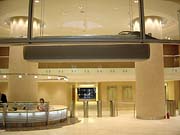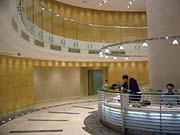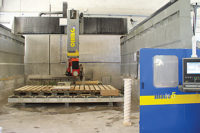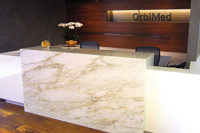

The tower rises 27 stories and features a “neo-Stalin†style with a mansard roof. But aside from its traditional exterior, it offers tenants a broad range of upscale and high-tech amenities, such as fiber optic telecommunications, round-the-clock security, a cafeteria, central reception and more. Overall, the building has more than 365,000 square feet of useable space, and tenants can rent spaces with typical measurements between 2,800 and 32,000 square feet.
To fit the 21st century theme of the building, the interior features a sleek, modern design, with high ceilings, stainless steel fixtures and plenty of natural light. It also includes extensive use of beige marble, which contributes to the light, open feel of the space. The architects for the project, Taner Alev and Meral Sengenc, selected Crema Golden marble as the predominant material for the flooring. The stone was quarried and fabricated by Tem-Mer Marble of Istanbul, Turkey, which supplied over 37,000 square feet of material in all.
The stone is used throughout the interior's public spaces, including all of the reception areas. Following the curvature of the reception desk and traffic flow, much of the marble was radius cut, and accents of darker materials enhance the neutral tones of the Crema Golden marble.
The development of the Paveletskaya Tower has been a success, with tenants including multinational companies such as Nestle and British Petroleum, as well as other leading international corporations and high-end Russian firms. The Building Management firm for the project, Enka, has also developed Paveletskaya Polshchad II, with the objective of creating a new business district in Moscow.

